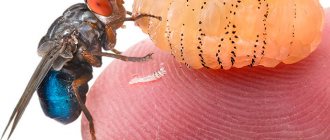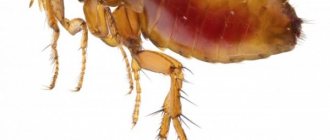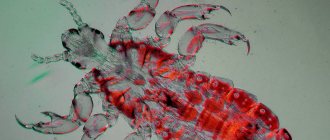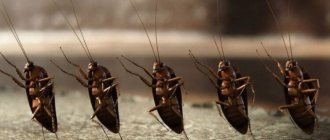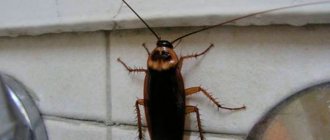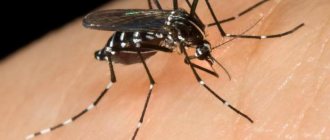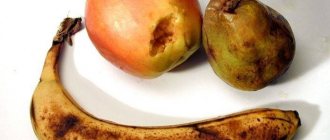Pediculosis is a disease that consists of the appearance of lice and nits on the hairy parts of the human body - the head and genitals. Lice are parasites that live, feed and reproduce only on humans. They do not breed on other species, such as cats or dogs, so you cannot become infected with head lice from pets or stray animals. Lice are transmitted only from person to person, since in order to exist they need human blood, which they feed on. But there are quite a lot of options for where lice come from in humans. Let's look at them below.
What types of lice do humans have?
The reasons for the appearance of lice are related to their characteristics and lifestyle. There are three types of parasites that live on humans and feed on their blood:
- head louse - lives and lays eggs on the scalp, it needs hair to move and attach nits to them, without hair the insect will not be able to move on the head, but it may well leave eggs, gluing them to the skin scales;
- pubic louse - lives on parts of the body on which not only hair grows, but also contains apocrine glands that secrete a special secret that is attractive to parasites; this is the genital area, around the anus, in the armpits, on the eyebrows and eyelashes;
- The body louse is a specific species that does not live on the human body; it prefers to lay eggs not on it either, but uses a person only for food, going out to hunt him, the rest of the time he hides in clothes, bedding and accessories, and other textiles.
Each of the three species lives in a strictly defined place, that is, the pubic louse cannot parasitize the head, and the head louse cannot parasitize the genitals. And they are transmitted from person to person in the same way: a head louse will try to get on the head, a pubic louse on the genitals, a body louse on the clothes next to the person.
Myths about lice
One of the most common misconceptions that causes head lice in children is the assumption that lice can be transmitted from animals to humans. Animal fleas or lice, of course, can bite a person once or twice, but their main habitat is an animal, be it a cat or a dog or even a parrot.
Read more about the types of lice, how they reproduce, and the incubation period on our website.
Another incorrect rumor that causes lice in children is that head lice occur due to nervousness or severe stress.
Lice are transmitted only from an infected person to a healthy person. There are no other variants of the disease. Even unsanitary conditions do not cause head lice, but only increase the likelihood of contracting an infection.
Myths associated with lice
There are established opinions about what causes lice to appear, but almost all of them are myths, that is, they have no basis and do not stand up to criticism:
- Lice appear in those who do not maintain personal hygiene. This is not entirely true. Parasites themselves do not spontaneously generate on dirt. Of course, if a person rarely washes and changes clothes, then the risk of not noticing lice is greater. But because of the dirt, insects do not appear.
- Lice are caused by stress. Again, by themselves, they do not originate in a person experiencing stress. Psychological difficulties can lead to the fact that a person does not pay attention to the physical condition, but due to stress, lice do not develop.
- Lice appear exclusively on people leading an asocial lifestyle, while “decent people” cannot have them. Everyone can catch insects with equal success. Status and wealth are not decisive here. People with low social responsibility may not be able to get rid of insects or do not consider it necessary. But the risk of contracting head lice does not depend on lifestyle. Lice, alas, exist in all levels of society.
Where do nits in the head come from?
No matter how strange it may sound, many people are well aware of where lice on a person’s head come from, but the origin of the nits remains in question. Having become infected with lice, mothers come to the doctor and begin to ask him about the origin of nits, then the specialist must give a personal lecture on biology and explain that nits are lice larvae, attached to the hair with a special substance produced by sexually mature individuals.
Due to their attachment to the hair, nits are not able to move or be transmitted, but the exception is hairs that fall out or remain on the comb, then when using someone else's comb, the nit can attach to the hair of a healthy person.
Ways of infection with pediculosis
The most basic way you can catch parasites is through direct contact with infected people. The head louse moves from head to head when touched or if you simply pass or stand very close to an infested person. Insects move through hair very quickly. Pubic lice pass from one person to another during sexual intercourse or while sleeping in the same bed in close proximity.
The second way is when using the personal belongings of an infected person. Lice can be found in a variety of objects:
- hats;
- clothing and underwear;
- combs, hairpins, elastic bands and other hair accessories;
- towels;
- bed sheets;
- pillows and blankets.
You can easily catch lice on public transport. On the seats of trains, buses, and planes, especially on soft textile headrests, including those with individual napkins, insects can go unnoticed and easily move from there onto their heads.
Signs of lice
Lice in hair
The incubation period lasts 20-21 days. In the first days, until the parasites have multiplied en masse, their presence and lice bites may go unnoticed. When their numbers increase, the following symptoms appear:
- severe itching;
- the appearance of small wounds on the skin;
- inflammatory process in hair follicles;
- hair sticking together, white lumps appearing;
- irritability;
- sleep disorders;
- the appearance of ulcers, boils;
- the presence of adults and nits in the hair.
Pediculosis needs treatment. For this purpose, special anti-lice products are used, which are sold in pharmacies. They are available in the form of shampoos, sprays, concentrates, and ointments. Mechanical combing is also carried out regularly using a comb. Adherents of alternative medicine prefer folk remedies. During the treatment of pediculosis, visiting public places is contraindicated.
Is it possible to get lice without close contact?
Lice cannot fly or jump far, as, for example, fleas do. But they move quite well on different surfaces. The insect can crawl a distance of 30 - 50 cm. This means that there is no need for close contact to pick up lice. That is, a person with lice could sit on a bench in the park, put his hat on it, from which the louse had crawled onto the bench, and leave from there. And another person, sitting down on this bench in half an hour or an hour, can become a new victim of the insect.
It is worth saying that the risk of lice infection exists only on the condition that the carrier becomes a female, which, if it comes into contact with a new person, will lay at least one egg. If you pick up a male or an immature larva, the disease will not develop.
Under what conditions can lice appear?
In general, lice live outside the human body for up to 4 days, and nits for up to 2 weeks, but these are exceptional cases. Most parasites live outside humans for up to two days. These insects need to feed on blood 4–6 times a day; they cannot go without food for a long time. They also need a suitable air temperature for normal existence. The optimal temperature for them is 33 – 36 degrees, so the human body temperature is ideal for them. When it drops to 23 degrees or increases to 40 degrees, they can survive, but at other levels they die.
At the same time, lice survive quite well in water. For some time they may be under slight pressure from a load, for example, under pebbles or sand. Therefore, we can conclude that lice can be picked up on the beach. Lice are also often caught in baths and saunas, massage parlors, swimming pools and other public places with seemingly increased sanitary requirements. Simply washing the surface with water will not kill lice or guarantee that they are not there.
Where are you most likely to get lice?
Parasites spread most quickly in places with high concentrations of people. The more people there are, the more contacts between them, the more favorable conditions for the spread of head lice. One person can infect dozens or even hundreds of others. High-risk places are objects in which a person is forced to stay for a long time and in which he cannot influence the sanitary condition:
- hospitals;
- prisons;
- barracks;
- hotels;
- camps;
- educational institutions.
Also risk areas are:
- public transport;
- sports facilities;
- swimming pools;
- hairdressing salons.
However, you can catch lice in any public institution and even on the street.
Why do lice appear more often in children?
Lice affect both children and adults. Due to their age, children are more likely to be in close contact with other children during games or communication. Children tend to hug more and touch their heads. In addition, they are more relaxed about exchanging clothes and wearing other people’s hats. In kindergartens and schools, in children's health camps, children are in fairly large numbers in a limited space, which creates suitable conditions for the spread of lice.
For some reason, some parents believe that there is no need to remove lice from children, that this is an age-related phenomenon that will go away on its own. It is not true. If left untreated, head lice will lead to dangerous scratches that become infected and can even cause blood poisoning. In addition, the child will be nervous due to constant itching.
By the way, not all children suffer from itching when parasites appear. Or they cannot tell what exactly is bothering them. Therefore, it is important to regularly and carefully examine the child’s head, thoroughly wash and comb the hair, so as not to miss the initial stage of lice infection. If detected early, getting rid of lice and nits is much easier.
Places with large crowds of people
After visiting preschools, schools, kindergartens, summer and health camps, where lice are common, the child may develop lice. Children become infected while playing, relaxing together, or sleeping. In social facilities, regular scheduled inspections for lice are carried out, but given the short incubation period and the large audience, these measures are not enough.
For the same reason, lice appear in an adult. Sanatoriums, prisons, hotels, hostels are sources of the spread of head lice.
Review
Upon my daughter’s arrival from the camp, she began to notice that she was scratching her head. At first I didn’t attach any importance to this, because I didn’t even imagine that head lice existed these days. And then I noticed a white scattering on my hair and discovered that these were nits. For a week I then washed my daughter’s hair with tar soap and combed out the nits every day with a fine metal comb.
Olga, Chertkovo
How to protect yourself from lice
As mentioned above, lice can infect anyone. There is no absolute guarantee. But to protect yourself, you must exercise reasonable caution:
- do not use other people's things;
- avoid contact with people who may be carriers of parasites;
- after visiting a place where there may be lice, inspect the scalp and clothes for the presence of insects, thoroughly wash your hair with an anti-lice product, wash clothes at high temperature;
- treat the room in which the infected person finds himself using insecticides or pediculicides, for example, MediLis-Bio, MediLis-Super;
- If lice are found on one family member, then treatment should be started immediately and prevention should be carried out for all household members.
Modern professional anti-lice products allow you to get rid of them in one day. The main thing is to follow the instructions and observe safety rules when working with them.
How to find lice on a child?
You can determine that a child has become infected with lice by the following signs:
- The child constantly scratches his head;
- Redness at the sites of bites is visible on the neck and scalp;
- There are whitish specks or nits on the hair, which are often confused with dandruff.
The easiest way to identify a lice infestation is when washing your hair. The insects begin to move slowly, and it is not difficult for an adult to see the parasites upon careful examination of the skin. Pediatricians recommend conducting a thorough examination of problem areas at the first alarming symptoms. This applies to the area behind the ears and the back of the head. It is important to use a fine comb to comb your hair. It is necessary to place a light-colored blanket or sheet on the child’s lap so that insects can be better seen.
In one-year-old babies, the presence of ectoparasites can be determined by profuse rashes, scratching and a nervous state. Nits and adult insects are clearly visible in the sparse hair of the baby. Due to the early age, if a child is diagnosed with lice, only a doctor should decide what to do. Self-treatment in such children can cause negative consequences.

